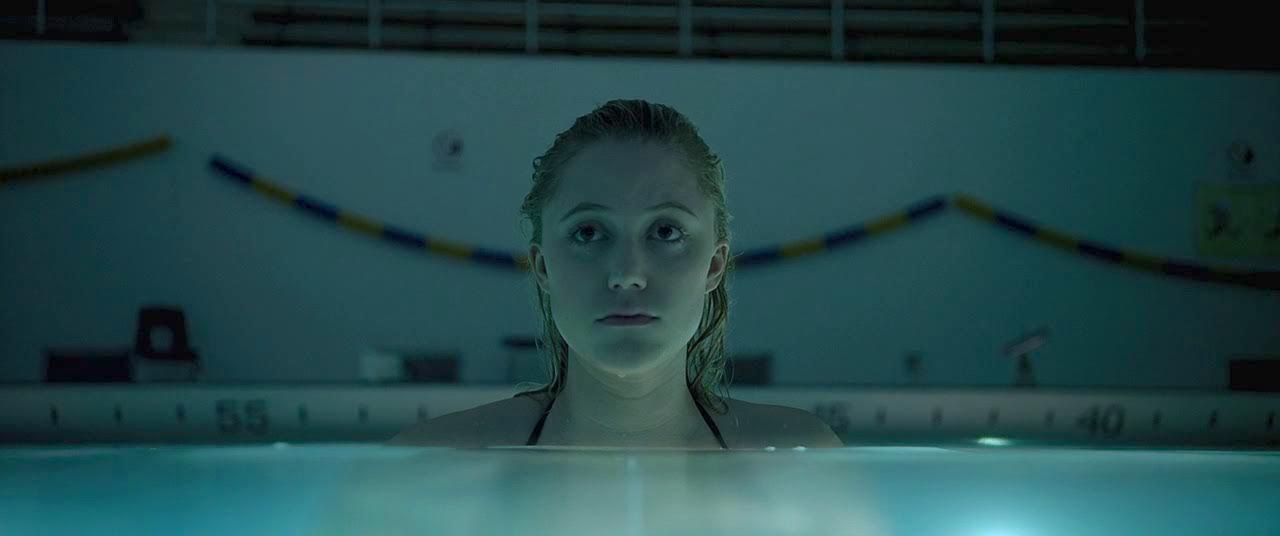
Scene: Explaining The Rules
Every movie with a supernatural horror needs the 'rules' scene. The one where we lay out for the hero exactly what it is they’re up against and why they are in deep, deep trouble. These scenes require the film to strike a tricky balance. You want enough info so we can get a firm grasp on the dynamic, without getting bogged down in minutiae. Share the tape in seven days or die. Got it! Too much and you end up like the heroes of Inception, shouting explanations at each other well into the film’s second hour. Not enough and the threat ends up too vague to be scary. Pennywise the Clown can do anything at any time, and kill kids sometimes but not others based on nothing. Whatever.
The best modern example of this scene, the one that hits the balance exactly right, is the post-coital explanation scene from David Robert Mitchell’s It Follows (2015)...

College student Jay (Maika Monroe) is out with her boyfriend Hugh and after having sex in a parked car, Hugh does a heel turn and chloroforms her. She wakes up tied to a chair in an abandoned warehouse. It feels like the start of a Saw scenario but instead of torture Hugh carefully explains that by having sex with him she contracted a malevolent demon that only she can see, which can take the appearance of any person. It will pursue her relentlessly and if it catches her it will kill her. And so on, and so on, until the entity arrives on cue in the form of a naked woman strolling deliberately through the warehouse.
The first thing jumps about this scene is that it works as a horror scene in its own right. No pausing the action for an exposition dump, it’s as scary as any of the film’s horror set pieces. The use of the Snorricam (the fixed mount on the chair) is nerve-jangling and the scene is clever in the way it gets us thinking backwards. If Hugh is willing to go to such elaborate lengths to convince Jay of the situation, something must have pushed him to this level of desperation. The entity becomes more intimidating by implication. This presentation is so effectively traumatizing it also eliminates the need for that obligatory stretch of the movie where a few bodies need to pile up before the hero believes the threat is real. Jay is fleeing for her life a mere two scenes later, no follow up session required. (We in the audience require zero convincing, having seen It’s gruesome handiwork in the best self-contained horror opening since Scream.)


Mitchell is devious in the way he plays with the implicit promise that in setting up the rules of the game, the heroes will figure a way out of danger. The heroes of It Follows never will. The basic calculus laid out in the rules scene never changes. They do their damnedest, and often it feels like the story is following the traditional arc where the kids make progress toward a solution, but it’s all illusory, Like when the gang learns they can slow down but not kill the entity with bullets. Why? How? The answer exists in the darkness beyond the rules. The term “dream logic” can feel like an excuse tossed around to pardon lazy writing, but It Follows earns this descriptor. It’s part of the reason I enjoy the film’s divisive climax. “Throw the toaster in the pool!” is just the kind of note you would leave yourself in the middle of the night believing the perfect answer came to you in a dream, only to wonder what the hell you were thinking in the cold light of morning
Trying to parse the finer points of the rules is one of the pleasures of It Follows, even if Mitchell wisely leaves all such pedantic debates out of the film. Can It chase you to foreign countries? Would it take a plane or walk across the ocean floor? And what precisely constitutes a sex act sufficient enough to transfer the curse? If you stop at heavy petting will It just key your car and move on? Audiences are always going to crave more answers. Insecure filmmakers coddle audiences with too much exposition and succeed only in earning their contempt. Every answer is just a source of new questions. Attempt to explain what should be left unsaid, and you only manufacture ammunition for armies of bad faith nitpickers to “well, actually” you into oblivion. Better to show a little tough love. More explanation may be what the audience wants, but films like It Follows know what they need.

Follow Michael on Twitter and Letterboxd. More episodes of The New Classics.